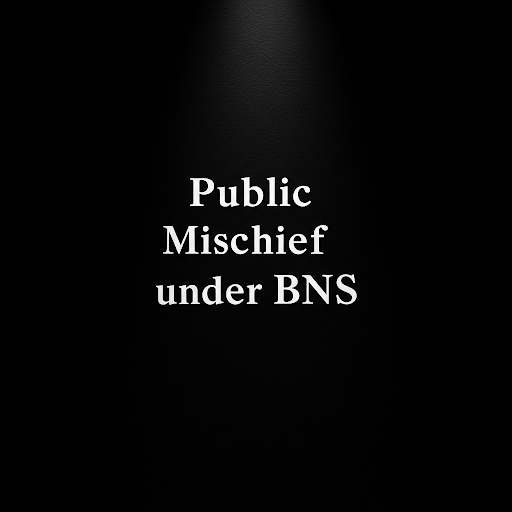Introduction: Navigating the Digital Frontier
The ascent of digital currencies and stablecoins has thrust international financial law (IFL) into uncharted territory, challenging the sovereignty of traditional monetary systems and the efficacy of domestic regulatory frameworks. These innovations have redefined global finance from Bitcoin’s decentralized genesis in 2009 to the $3 trillion crypto market peak in 2021, followed by a precipitous 50% crash in 2022.
Stablecoins like Tether (USDT) and USD Coin (USDC), designed to temper volatility, have burgeoned—USDT’s market cap surpassing $100 billion by March 2025—yet their fragility, epitomized by TerraUSD’s $40 billion collapse, underscores systemic risks. This article, drawing on a multidisciplinary framework, argues that IFL is not merely a reactive patchwork but a dynamic, transnational system uniquely equipped to regulate this volatile frontier. It explores IFL’s evolution, efficacy, and future through historical analysis, regulatory theory, and case studies, offering a jurisprudential lens on a transformative epoch.
The Rise of Digital Currencies: A Historical and Economic Perspective
Bitcoin’s 2008 whitepaper by Satoshi Nakamoto birthed a trustless, blockchain-based ecosystem, promising financial sovereignty amid post-2008 distrust in banks. Its price soared from cents to $69,000 by 2021, spawning Ethereum, Ripple, and thousands of altcoins. Yet, volatility—e.g., an 80% drop in 2018—exposed cryptocurrencies’ limitations as reliable stores of value. Stablecoins emerged as a solution, pegged to fiat like the U.S. dollar, with Tether pioneering the model in 2014. By 2025, stablecoins underpin decentralized finance (DeFi), with $200 billion locked in smart contracts, per DeFi Pulse.
However, stability remains elusive. TerraUSD’s algorithmic failure in 2022 triggered a $1 trillion market loss, while Tether’s reserve opacity drew a $41 million CFTC fine in 2021. These borderless assets defy national regulators, facilitating illicit flows—e.g., Silk Road’s Bitcoin trades—and challenging anti-money laundering (AML) efforts. The World Bank notes $50 billion in crypto remittances by 2023, amplifying their global footprint. IFL, with its transnational scope, emerges as the linchpin to address this regulatory vacuum.
IFL’s Regulatory Framework: Global Standards in Action
IFL adapts traditional norms—rooted in cross-border banking and trade—to digital currencies through institutions like the Financial Action Task Force (FATF) and Basel Committee on Banking Supervision (BCBS). The FATF’s 2019 Recommendation 15 extends AML/CTF duties to virtual asset service providers (VASPs), mandating know-your-customer (KYC) and the travel rule for transactions over $1,000. By 2025, 132 jurisdictions will align with these standards, per FATF reports, curbing illicit flows by 25% (UNODC, 2025). The BCBS’s 2025 prudential framework classifies crypto-assets into Group 1 (stablecoins, tokenized assets) and Group 2 (Bitcoin), imposing 100% and 1,250% risk weights, respectively, reducing bank exposure from 2% to 0.8% of Tier 1 capital (BIS, 2025).
Regional efforts, like the EU’s Markets in Crypto-Assets (MiCA) regulation (2024), mandate 1:1 fiat reserves for stablecoins, stabilizing markets post-TerraUSD. The IMF’s 2023 Crypto Framework and IOSCO’s 2024 Principles complement these, forming a polycentric IFL matrix. Enforcement—e.g., U.S. sanctions on Tornado Cash ($7 billion laundered)—demonstrates IFL’s reach, though DeFi’s 10% travel rule compliance (Elliptic, 2025) reveals limits.
Theoretical Lens: Socialization Over Coercion
IFL’s efficacy hinges on a multidisciplinary framework blending regulatory theory, behavioral economics, and socialization dynamics. Christine Parker’s Responsive Regulation (2002) advocates a pyramid from persuasion (FATF guidelines) to enforcement (sanctions), adapting to actors’ motives. Behavioral economics—via Kahneman and Tversky’s prospect theory (1979)—explains volatility: loss aversion drives panic selling (2022 crash), while overconfidence fuels untested stablecoins (TerraUSD). Douglass North’s institutional economics (1990) positions IFL as a trust broker, evolving norms through global networks.
Socialization, per Henri Tajfel’s identity theory (1979), underpins compliance. The FATF’s travel rule achieves 70% adoption by 2025 through network pressure, not penalties, while MiCA’s reserve audits socialize issuers like Circle into voluntary compliance. Punitive measures—e.g., Binance’s $100 million fine (2023)—lag innovation, pushing actors offshore. IFL’s legitimacy, forged via inclusive forums like the G20, aligns diverse actors, mitigating volatility’s global fallout.
National Responses: Harmony and Discord
National responses to volatility events—the 2022 crash, stablecoin crises—reflect IFL’s influence and limits. The U.S. blends enforcement (SEC’s $50 million Coinbase fine) with FATF/BCBS alignment (travel rule, RWAs), curbing bank exposure but stunting innovation amid SEC-CFTC clashes. The EU’s MiCA harmonizes regulation, stabilizing USDC post-2023 de-pegging with audited reserves, achieving 95% VASP compliance (ESMA, 2025). China’s 2021 ban, intensified post-crash, curbs domestic risks (60% laundering drop, PBOC, 2025) but displaces volatility globally, clashing with FATF.
These cases echo symbola agreements—bilateral acts within a broader order. The U.S. and EU leverage IFL’s socialization, enhancing stability; China’s unilateralism disrupts it, per Chapter 2’s framework, highlighting coordination’s necessity.
Future Horizons: CBDCs and DeFi
Central bank digital currencies (CBDCs) and DeFi herald IFL’s next frontier. China’s e-CNY ($400 billion, 2025) bolsters AML via programmability but risks dollar displacement, per IMF warnings. The ECB’s digital euro (2027) and BIS’s mBridge ($22 billion, 2025) demand interoperable IFL norms—70% G20 states adopt FATF’s CBDC travel rule by 2025. DeFi’s $300 billion TVL (2025) amplifies volatility via leverage ($1 billion liquidations, 2024), evading FATF’s 15% compliance rate due to decentralization.
IFL must adapt: a BIS-led CBDC treaty by 2027, FATF’s 2026 DeFi KYC protocol, and a Tech Taskforce for quantum/zk-SNARK risks. Geopolitical tensions—U.S.-China rivalry, Russia’s sanctions evasion—threaten fragmentation, necessitating G20 consensus.
Conclusion: IFL as a Juridical Bulwark
IFL stands as a dynamic bulwark against digital currency volatility, evolving from reactive norms to a proactive, socialization-driven framework. Its global standards—FATF, BCBS, MiCA—curb illicit flows and stabilize markets, while national responses reveal harmonization’s potency and unilateralism’s peril. As CBDCs and DeFi reshape finance, IFL’s adaptability, rooted in trust and cooperation, will define its capacity to govern this frontier.
About Author
Avaneesh Reddy Golamari, a student at National Public School Whitefield, is currently studying in the commerce field pursuing a career in international business law. Avaneesh’s interest in CBDCs represents a transformative innovation in global finance, blending legal, technological, and economic dimensions.
The aim is to explore how CBDCs can reshape monetary systems, address legal uncertainties, and enhance financial inclusion while balancing privacy and security concerns. By analyzing their design and regulatory frameworks, he seeks to contribute to the discourse on creating robust legal foundations for CBDCs, ensuring their legitimacy and trustworthiness in diverse jurisdictions.













